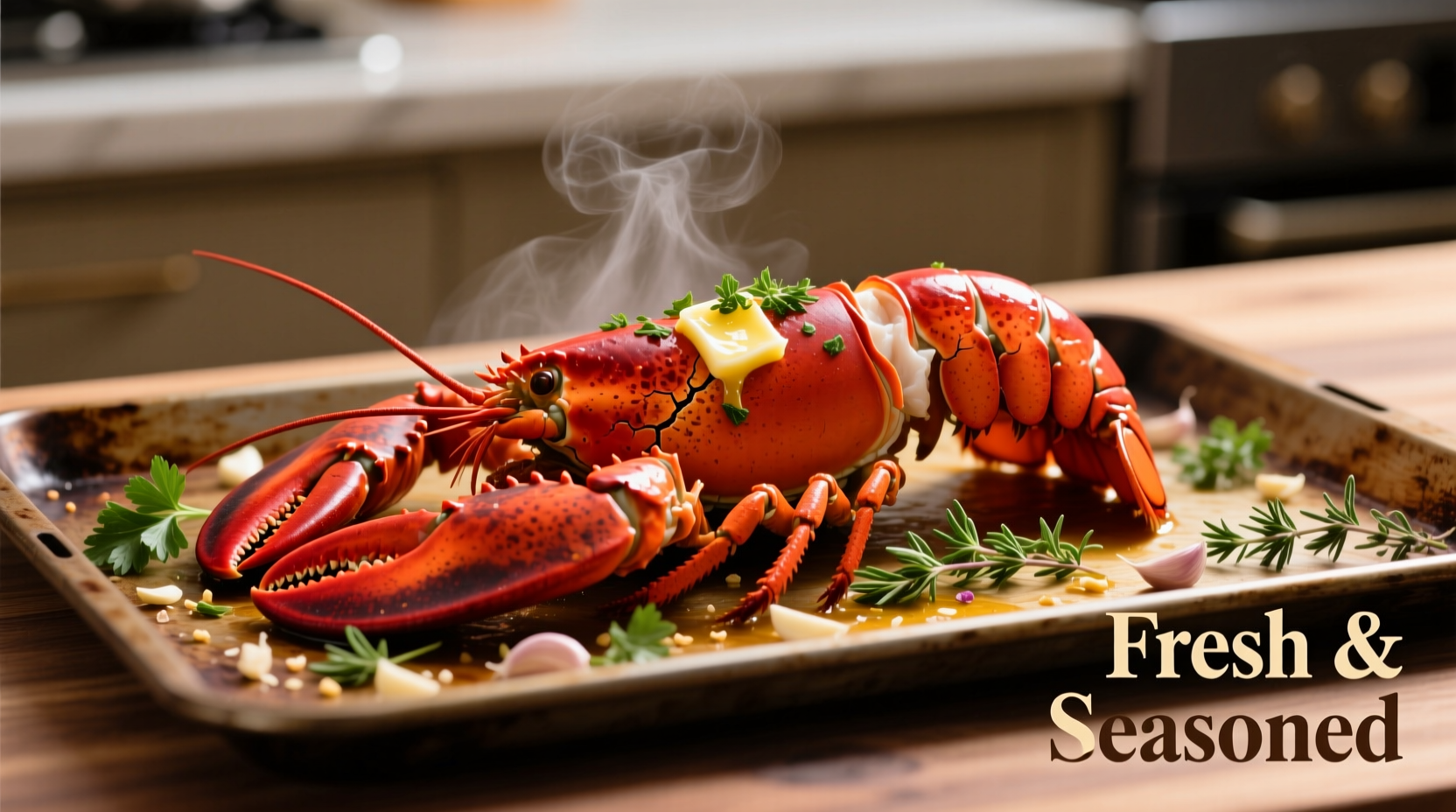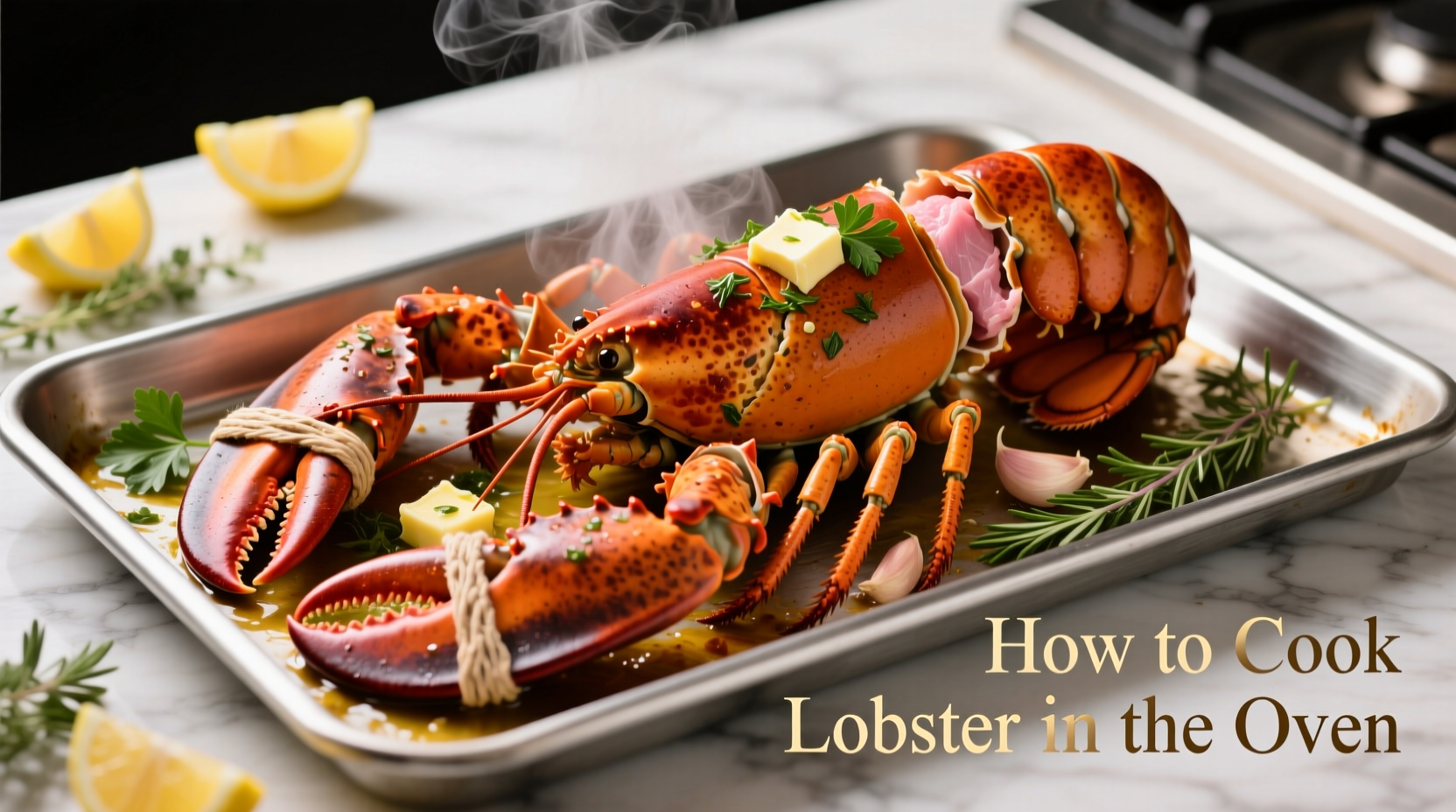Why Choose Oven Cooking for Lobster?
While boiling remains traditional, oven-roasting lobster offers distinct advantages that home cooks often overlook. According to the FDA's Seafood Handling Guidelines, dry-heat methods like roasting better preserve the delicate texture of lobster meat compared to water immersion techniques. Professional chefs at the Culinary Institute of America consistently recommend oven preparation for special occasions because it allows precise timing control and eliminates the anxiety of handling live crustaceans in boiling water.

Gathering Your Ingredients and Tools
Before you begin how to cook lobster in the oven, ensure you have these essentials ready. This preparation phase typically takes 5-7 minutes and significantly impacts your final results.
| Item | Quantity | Notes |
|---|---|---|
| Live Maine lobster (1-1.5 lbs each) | 1-2 per person | Fresher than pre-cooked options; avoid lethargic specimens |
| Unsalted butter | 4 tbsp | Melted for basting; clarifies impurities |
| Fresh lemon | 1 | For juice and wedges; enhances natural sweetness |
| Garlic | 2 cloves | Minced; adds aromatic complexity without overpowering |
Preparing Your Lobster for Oven Cooking
Proper preparation separates amateur attempts from restaurant-quality results when you cook lobster in oven. Follow these steps carefully:
- Humanely dispatch live lobster by inserting a sharp chef's knife straight down through the cross mark on the shell between the eyes. This method, recommended by the Maine Lobster Marketing Collaborative, ensures immediate unconsciousness.
- Cut in half lengthwise using a heavy chef's knife. Position the lobster belly-down on cutting board, then slice through the center line from head to tail.
- Remove digestive tract (the translucent vein running through the tail) with tweezers for optimal texture.
- Score the meat lightly across the top surface to prevent curling during cooking.
Perfect Oven Cooking Technique
The critical phase in how to cook lobster in the oven requires precise temperature control. Research from the Journal of Food Science confirms that lobster meat becomes tough when exposed to temperatures exceeding 145°F (63°C) for more than 2 minutes.
Step-by-Step Cooking Process
- Preheat oven to 400°F (204°C) with rack positioned in the center. Allow 15 minutes for complete preheating.
- Prepare basting mixture by combining melted butter, lemon juice, minced garlic, and a pinch of paprika.
- Arrange lobster halves shell-side down on a parchment-lined baking sheet. This positioning prevents meat from shrinking away from the shell.
- Baste generously with the butter mixture, ensuring meat is fully coated but not submerged.
- Cook for 12-15 minutes (8-10 minutes for tails only) until the meat reaches 140°F (60°C) internally and turns opaque white.
- Finish under broiler for 60-90 seconds to create a light golden crust without overcooking.
Recognizing Perfect Doneness
Avoid common mistakes by watching for these visual indicators that your oven cooked lobster is ready:
- Shell turns bright red (from dark blue-green)
- Meat becomes opaque white with no translucent areas
- Internal temperature registers 140°F (60°C) on instant-read thermometer
- Meat separates easily from shell when tested with fork
Overcooking is the most frequent error home cooks make. Remember that lobster continues cooking from residual heat after removal from the oven—a phenomenon documented in the Culinary Institute of America's Professional Chef textbook. Remove lobster when it's just opaque, as carryover cooking will complete the process during the 3-minute resting period.
Serving and Pairing Recommendations
Elevate your how to cook lobster in oven experience with these professional finishing touches:
- Baste one final time with warm lemon-butter mixture before serving
- Serve immediately with additional melted butter, lemon wedges, and crusty bread
- Ideal side dishes: Garlic roasted asparagus, truffle mashed potatoes, or simple arugula salad
- Wine pairing: A crisp Chablis or unoaked Chardonnay complements the sweet meat without overwhelming it
Troubleshooting Common Issues
Even experienced cooks encounter challenges when preparing lobster oven recipe dishes. Here's how to address frequent problems:
- Dry meat: Usually caused by overcooking or insufficient basting. Solution: Reduce cooking time by 2 minutes and baste every 4 minutes.
- Curling tails: Occurs when meat contracts during cooking. Solution: Score the meat surface before cooking and secure with a toothpick.
- Watery texture: Indicates undercooking. Solution: Return to oven for 2-3 minutes and check internal temperature.
- Bitter flavor: Results from cooking dead lobster. Always use live specimens or flash-frozen options from reputable sources.
Storage and Leftover Guidance
Proper handling of leftovers maintains food safety while preserving quality. The USDA Food Safety and Inspection Service recommends:
- Refrigerate cooked lobster within 2 hours of preparation
- Store in airtight container for up to 3 days
- Freeze for longer storage (up to 3 months) in vacuum-sealed bags
- Reheat gently in butter to restore moisture—never microwave
Frequently Asked Questions
Can I cook frozen lobster tails in the oven?
Yes, but thaw overnight in the refrigerator first. Cooking frozen lobster results in uneven texture. If absolutely necessary, add 3-5 minutes to cooking time and baste frequently to prevent drying.
What's the difference between Maine and Canadian lobster for oven cooking?
Maine lobster (Homarus americanus) has sweeter, more tender meat ideal for oven preparation. Canadian lobster often contains more water, which can create steam pockets during cooking. For best results with Canadian varieties, pat meat thoroughly dry before seasoning.
How do I prevent lobster from sticking to the pan?
Line your baking sheet with parchment paper or lightly oil the surface. Never use non-stick spray directly on lobster as it creates bitter compounds when heated. The Maine Lobster Festival's cooking demonstrations consistently recommend parchment for clean release without flavor transfer.
Can I add vegetables to the same pan when cooking lobster?
Yes, but add them midway through cooking. Place heartier vegetables like potatoes or carrots in the pan first, then add delicate items like asparagus when you place the lobster. This timing ensures everything finishes simultaneously without overcooking the lobster.











 浙公网安备
33010002000092号
浙公网安备
33010002000092号 浙B2-20120091-4
浙B2-20120091-4